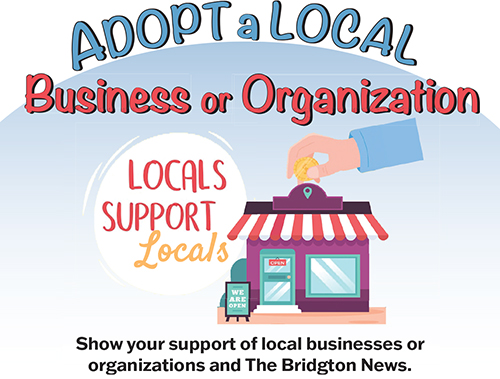It dawned on me: When a favorite product leaves the shelves
By Dawn De Busk
BN Columnist
My father’s hairstyle has endured for five-and-a-half decades. It is straight from the 1950s — a combination of James Dean and Elvis, a result of my dad’s southern California upbringing.
In fact, when he was 15 years old, he worked in a cement factory. He asked the other guys working there what they used to remove the cement from their hair. They recommended Prell shampoo and VO5 conditioner. That regiment stuck.
As long as I can remember, my dad wore his hair slicked back with VO5 hair gel.
In 1992, while visiting me in Anchorage, my dad was devastated that he couldn’t find his VO5 at the store in Kenai. It had been temporarily out of stock. Most of the conversation that morning revolved around VO5. He told me how a store clerk had talked him into buying an alternative product. He complained that the hairstyling product left a residue in his hair, and it was driving him nuts.
To top it off, this happened months after Heinz hot ketchup had slipped from the grocery store shelves into obscurity.
Probably everyone knows about Heinz ketchup. Some people may even remember the TV commercial that showed an upside down Heinz bottle over a burger or a hotdog, the thick condiment slowly making its way toward the meal to Carly Simon’s song, Anticipation.
The company’s hot ketchup was one of my dad’s mainstays. Now, it is only available in small doses for three times the price, my father told me recently. He has even filled out forms, requesting a tall bottle of hot ketchup. His complaints have been in vain.
When I was seven or eight years old, my dad started collecting the ketchup bottle caps on which the price had been stamped. He kept track of the cost increases, and complained each time the price went up. His rant was backed with physical proof.
So, in the early 1990s, two of the products that were intertwined with my father’s routine and his quality of life could not be purchased.
Don’t you just hate that — when a favorite product is discontinued?
Although my dad might be more verbal, more staid in his ways, most people react similarly. It makes a person feel like they were the only customer of the defunct product. It makes a person search to find a suitable alternative to something that was familiar and trustworthy.
In my mind, Snapple hit the height of its popularity after being mentioned while the characters drank the product during an episode of Seinfeld.
I adored the peach tea, and my sister and I loved mango madness — mostly because it was fun to say. Later, I discovered Snapple’s black cherry juice. It was so incredibly flavorful that I can vividly recall the summer evening that I sipped it, sitting on the lawn overlooking the carnival grounds in Fairbanks. That was the first and last time I would ever taste it.
Black cherry must have been a test product, because it is no longer sold or listed on the company’s website.
Then, for a while, I was addicted to the tangy-sweet taste of SoBe orange carrot elixir. However, in the small town where I lived, a person could never count on it being in stock.
So, I developed a spiel about being denied my favorite flavor of SoBe. Additionally, I developed a fondness of other SoBe drinks. Like my father, I collected the caps from SoBe containers – not to track the price, but for the clever sayings inside the lid. In fact, I designed a mobile made of driftwood, seagull feathers, and SoBe caps.
Traveling back to my childhood, the candy aisle had a few things that are not around nowadays: Black Jack gum and candy cigarettes.
Licorice, or aniseed, is a natural sweetener. That was the flavoring ingredient in Black Jack gum, which is still manufactured today in a single batch once every three years. The product was introduced to the public in 1884, but by the 1970s, sales had declined, and production of the gum followed that pattern. Candy cigarettes, which were pure sugar, were banned in at least one state as well as Canada. Seldom seen in stores, both Black Jack gum and candy cigarettes can be ordered on the Internet.
It seems that being a loyal customer puts a person at the mercy of that product’s overall sales.
Ten years ago, when I was pregnant with my daughter, we lived in a camper with a non-functioning oven. Therefore, the sweet that I most craved, brownies with chocolate frosting, had to be purchased at the grocery store bakery.
During the last two months of my pregnancy, we moved to another town. The closest supermarket was owned by the same company. However, it did not carry the same brownies.
After several times of not seeing the dessert, I asked an employee about the product. Casually, the man answered it wasn’t popular enough at this location, so they quit carrying it. Not enough people bought the brownies, he said.
I looked at him. I looked at my belly. I looked at the baked goods display case where the brownies should have been.
In an urgent voice, I explained that there were two customers who wanted the brownies back, and I shopped there a few times a week. If the store ordered a small quantity, I would certainly buy them.
My request, which was sprinkled with sincere politeness, was never satisfied.
Anyhow, that day I left the store with a disappointing box of chocolate chip cookies.


